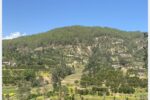KANCHANPUR: Conservationists are encouraged by the rising vulture population. Vultures are fed on dead animals and are regarded as natural scavengers.
Earlier, the record suggested that the presence of vultures was extinct. But with the efforts launched to conserve the bird facing the risk of extinction have led to a significant rise in its population.
In 2010, the sole habitat of the vulture was found here, but now the situation is different but encouraging. The finding of 50 nests has suggested the increasing number of birds in the district.
Nepal Bird Conservation’s conservationist Hirulal Chaudhary said,” The development can be taken positively. The bird population had significantly dropped in the past two decades, making the people concerned disappointed. Its number has now increased from 10 to 200.”
The ban on the use of diclofenac, the anti-inflammatory drugs, has led to the rise in the vulture population. The study conducted in Nepal, Bangladesh, India, and Pakistan showed that vultures feeding on the carcass with the residues of diclofenac had died due to a heart attack.
It was really challenging to protect the animal from feeding on carcasses treated with diclofenac drugs, he said. Now alternative drug to diclofenac is used for animals and that drug is found to be no fatal to vultures.
(Rajendra Prasad Paneru/RSS)









Comment